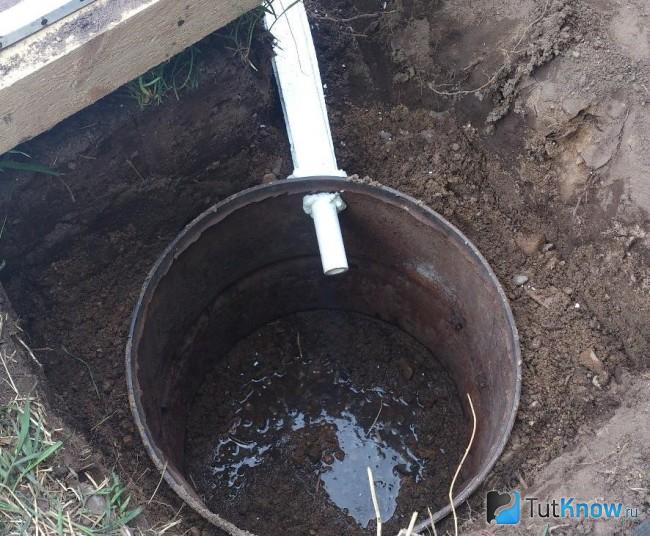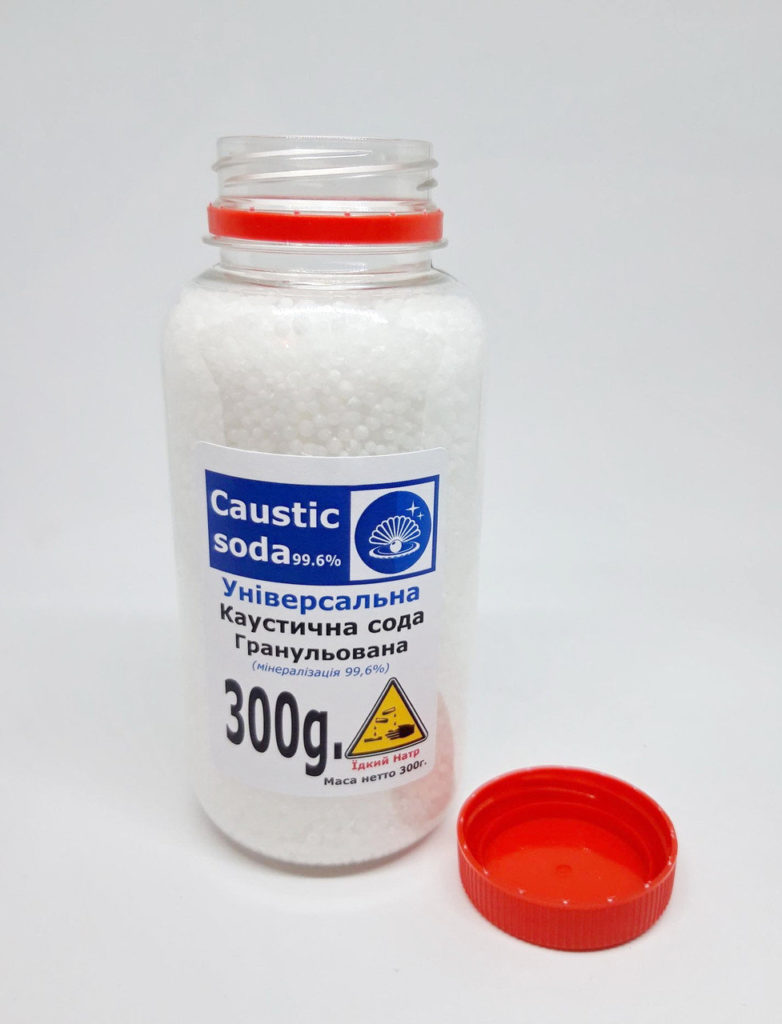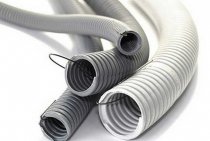Features of the functioning of the sewage pit
The operation scheme of the sewage pit consists in settling at the bottom of the pit of insoluble solids (toilet paper, feces, etc.) and draining the purified water through the walls and bottom. The structure is built in places with low groundwater levels, otherwise it will quickly fill with external liquid. The depth of the pit should not exceed 3 m. With such dimensions, the sewage pump hose reaches the bottom of the pit without any problems.
After the accumulation of a large amount of sediment, it must be removed mechanically. Depending on the intensity of use of the sewage system, the procedure is performed every 2-3 months. The owners of the plots know from experience what the frequency of filling the pit is, and if it has changed, there is cause for concern. The rapid filling of the tank paralyzes life in the house, basic amenities become inaccessible to residents. There is an unpleasant putrid smell in the house.
To ensure that the intervals between cleaning procedures do not decrease, perform regular and periodic maintenance of the drive. In the first case, the drain pit is cleaned once a year, in spring or autumn, using a sewer machine. Thus, the prevention of clogging of the drive is carried out, and if it is observed, there will be no problems with filling the pit. Periodic maintenance of the tank is carried out to protect the storage tank from flood waters and winter freezing.
- The liquid does not escape through the walls due to siltation of the surfaces. A similar problem occurs if the pit is not cleaned for a long time. Feces, household waste, solids settle to the bottom and eventually create a dense crust that makes it difficult for water to drain into the soil. Fat inclusions present in drains clog pores in the soil and make it waterproof. Silting of the filter layer is an inevitable process that cannot be eliminated. But if you control the contents of the drains, the frequency of cleaning can be increased.
- The cesspool is operated more intensively than after its arrangement, therefore the amount of drains increases, and they do not have time to seep into the ground on their own.
- An error in the calculation of the volume of effluents from the house, due to which a smaller pit was dug. To remedy the situation, another hole is being dug nearby. Both storage tanks are connected by overflow pipes. In this case, they form a system resembling a traditional septic tank. Solid inclusions settle in one tank, liquid flows into the second, which then seeps through the walls.
- Drainage does not flow due to freezing of the soil. The problem is solved by heating the frozen sewage.
- The drain pit quickly fills up due to rising groundwater levels. Most often, water enters the reservoir after intense precipitation. There are other reasons: poorly organized water drainage on the surface; decrease in filtration properties of the soil; deterioration of evaporation of moisture from the soil after asphalting the site. Silting, accumulation of fecal waste, and the appearance of an unpleasant odor become the consequence of groundwater entering the storage tank.
Ways
All sewer cleaning methods are divided into two groups:
- chemical;
- mechanical.
It is possible to single out the third group, which combines the features of both chemical and mechanical effects. These include a folk remedy with mixing soda and vinegar directly in the sink or bath drain.
To prevent blockages, chemical products are used, which can be found in any hardware store or supermarket. Their task is to clean the walls of pipes from fatty films and solid sediment.Mechanical methods are suitable in any situation, even with a slight clogging, even with the formation of a plug impenetrable to water. However, it is mechanical means that can harm the pipes themselves, their inner surface, from which the next pollution will proceed more actively.
So the general rule is that to prevent blockages, you should regularly use chemical products to keep the pipes clean and only if there are problems with the drain, when the water no longer leaves on its own, use physical force and break through the sewer by force.
Dilution of soda for flushing the sewer pipe system
As mentioned earlier, there are three types in which this product is produced - liquid in the form of a gel or solution, solid in the form of a powder. "Mole" is purchased in a hardware store ready-made, and it is strictly forbidden to pour a solid into pipes, it must first be diluted. This will require 3-4 kg of soda, a device in the form of a spatula or scoop, and a metal or plastic container that will not collapse from the powder, since it is quite caustic.

To avoid damage to the skin of the hands, it is recommended to wear gloves, and to prevent the solution from getting on the mucous membranes, wear glasses. Pour the entire amount of soda bicarbonate with water in the amount of 7-7.5 liters of water and stir until it is completely dissolved. When combined with a liquid, alkali begins to release a large amount of heat into the environment, so you need to know that the bucket with all its contents will heat up and may even become hot.
Scope of sodium hydroxide
Basically, this is the elimination of strong contaminants, since the product effectively dissolves dirt, grease accumulations, soot, soot, and oil stains. Alkaline features are used in the neutralization of acidic effluents. Thanks to these properties, the product is effectively used to clean sewerage, it perfectly dissolves the organic components that are contained in pollution, soda copes with this without difficulty.

Cleaning with this method can be done independently without any special difficulties; special skills are not needed for this. You just need to pour the product into the pipes and wait a certain time, then rinse with running water for several minutes, repeat the procedure if necessary.
Sanitary standards for the construction of a septic tank
Before choosing a place for a future sewer, you need to familiarize yourself with the sanitary standards for a septic tank. This is a list of some documents in accordance with which construction should be carried out. The main document that should be followed during the construction of such structures is SNiP 2.04.03-85. This regulatory document regulates the construction of sewers. If water is supplied to the house from a well or well, then compliance with the norms of SNiP 2.04.01-85 and 2.04.04-84 will also be required.
Sanitary standards (SanPiN 2.1.5.980-00) regulate sanitary requirements, the main task of which is to maintain the purity of water located on the surface. Since the septic tank is considered a potentially hazardous area, it is also subject to regulation by SanPiN 2.2.1 / 2.1.1.1200-03.
Distance to the well
Choosing a place for a treatment plant should not only be based on your own preferences, but also in compliance with standards. The fact is that in the event of an emergency, effluents can get into drinking water if a well or well is located nearby. Water pollution can cause disease or even death. Even despite the fact that modern treatment plants have strong hermetic housings, it is impossible to exclude the situation of pipe rupture or depressurization. Therefore, you should choose the maximum distance to the nearest body of water.
The regulations state that the choice of the distance from the well or well to the treatment plant will primarily be influenced by the type of soil on the site. If there are filter layers that can filter out drains in case of force majeure, then the distance can be reduced.
Getting permission
Cesspools and septic tanks can harm the environment, so they cannot be built uncontrollably. Before preparing a project, be sure to contact the SES and obtain the necessary permission. Only after it is given to you, and the project is approved, you can proceed with the construction of the structure. A permit will not be issued if the construction does not comply with the sanitary rules and building codes that are in force at the time of the creation of the project.
Cleaning a cesspool with a mud pump
One way or another, you have to periodically pump out, but, as we already understood, if you do it yourself, it will be quite unpleasant and difficult.
Features of cleaning the pit using a cesspool machine:
Use a directory or the Internet to find an organization that deals with the disposal of household liquid waste. Order an Ilosos, a special machine that pumps out liquid waste. Sludge suction machines are needed for vacuum cleaning of wells, cesspools, sewer and storm networks from sludge and its transportation to the place of unloading. Suction suction machines include a vacuum pump with a drive, a tank, hydraulic, electrical, pneumatic systems, a suction boom and additional equipment. Management is carried out from the remote control panel of the soaking up arrow. Sludge is unloaded when the tanks are overturned. The only drawback of this method is the pumping out of the pit for the first time in all existing time, after such a pumping out, the ability of the soil to absorb water deteriorates, and it will have to be pumped out annually.
If you use the cesspool only in the summer and the water consumption is small, then you will have to call the sewers about once a month. However, with permanent residence in the house and active use of the shower, washing machine, dishwasher and other water-consuming appliances, you will have to order an ilosos three to four times a month.
Of course, this service is not very cheap, but this method of cleaning cesspools is very effective and allows you to solve many problems, including the problem of waste disposal.
Cleaning the cesspool yourself
One of the most popular local sewage systems today is a cesspool, which is actively used in summer cottages, in private houses and cottages. Unlike other similar systems, it does not require large costs for use. The main problem after putting the cesspool into operation is the choice of the most correct option for cleaning it.
Cleaning with a conventional pump or other improvised means has several features:
The appearance of an unpleasant odor; The need to purchase a special fecal pump or filters for a conventional pump so that it does not become clogged; The process takes a lot of time and effort; The need to remove waste from the site.
Using a regular bucket and shovel will make the cleansing process even more difficult and unpleasant. In addition, you will need a large sealed container in order to carry out the subsequent removal of wastewater. Therefore, if you actively use the cesspool, it is best to purchase a special automatic pump that will pump out sewage as the pit fills up.
The use of biologics
An excellent solution for cleaning the pit is the use of chemical and biological products. If necessary, you can use the advice of a specialist to determine the required amount of funds for your cesspool.To disinfect the contents, there is also an antiseptic for cesspools.
Features of the use of biological products:
Biological products process accumulated fats, feces, paper, vegetable peels and other contents. At the same time, the volume of waste is significantly reduced and cesspools are disinfected. For materials that were used in the construction process, biological products, unlike chemicals, are completely safe. They do not adversely affect metal, cinder block, brick, concrete and plastic. However, bacteria do not process inorganic materials, household or construction waste, or plastic containers such as plastic bags and bottles. Many chemicals are harmful to bacteria, therefore, wastewater containing washing powders and detergents cannot be drained into a cesspool. In an aggressive environment, bacteria will die, so cleaning will be ineffective. Biological products begin to work two hours after entering the liquid medium. In four hours, they effectively cope with an unpleasant odor. Bacteria can work effectively only at temperatures from +4 to +30 degrees. Before using the drug, be sure to read the instructions. Some drugs are sold immediately in finished liquid form, while others are in the form of granules that must first be diluted in water. With the help of biological products, it is possible to restore the drainage properties of the pit, that is, its ability to absorb water. This is especially true after pumping with cesspools, when the drainage of the cesspool is disturbed.
Also, the drainage properties may deteriorate during the use of the pit, as a result of flooding the bottom with organic waste, build-up of waste on the walls, or the base of a fatty impermeable plug. When using a bioactivator, drainage will be restored, the bottom and walls of the sewer pit or septic tank will return to their original state, and the incoming water will again be absorbed into the soil.
Using biopreparations for cesspools, local treatment facilities, the consumer must be sure of their effectiveness not only in terms of cleaning and combating unpleasant odors, but also in the environmental safety of the drugs used.
The biological products that are used for cleaning are the result of long-term scientific research in the field of biotechnology. They consist of microorganisms and bacteria, which by their vital activity do not cause any harm to the environment.
Today it is possible to order biological preparations for cleaning cesspools in specialized companies that will help you choose a preparation for each specific situation, as well as help determine the optimal amount of preparation that is needed for a cesspool of a certain volume.
Neutralization of acids
The use of caustic is not limited to sewer cleaning. In particular, sodium hydroxide is used to neutralize strong acidic pipe cleaners. If the remaining acid is not removed from the pipes, it will continue to work and can corrode the metal. Caustic soda completely neutralizes acid without damaging cast iron or steel structures.
Also, caustic agents are used in "shock wave" technologies for cleaning main pipelines.
The active substance successfully dissolves scale and is used both in everyday life and when welding pipelines, gas pipelines, oil pipelines.
The duration of exposure to the metal for a successful result is about 12 hours.
Summarize
Of course, cleaning sewer pipes with ordinary baking soda is much inferior to the technology for using special reagents, but it always gives a positive effect. Therefore, it should not be forgotten. After all, caustic is not always available, and soda, vinegar and salt can always be bought at the store.
In this way, plastic and steel pipes are cleaned. They can also be used for maintenance work.
We note right away that caustic soda is very different from food, although ordinary baking soda can be effectively used to clean sewers.
Caustic copes with the same tasks much more efficiently, but it can only be fully used to clean metal sewer pipes. If a section of pipes replaced with plastic gets in the way of cleaning, they can be damaged.
The use of strong alkalis and acids designed to eliminate blockages in metal pipes on plastic sewers is undesirable.


